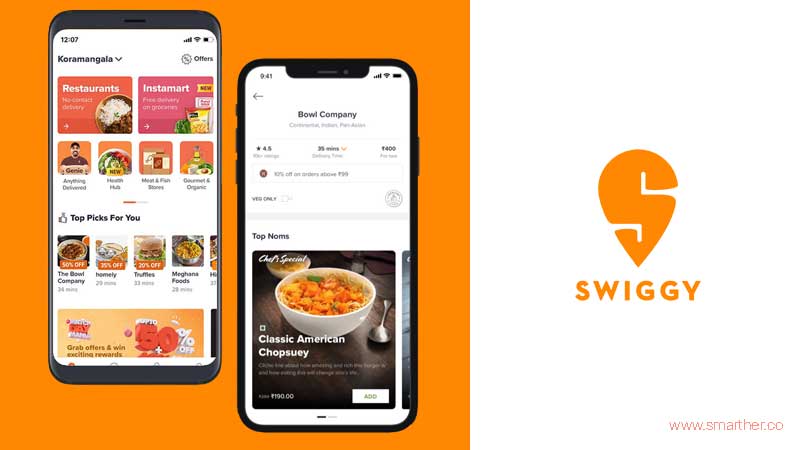In this age, being environmentally aware is becoming more and more important. This is why industry sustainability techniques are being closely inspected. The food delivery sector and online restaurant booking, which has become a constant part of city living, is definitely not exempt from this.
This article dives into the eco-conscious strategies employed by food delivery & dining app like Swiggy and ponders whether their actions are sufficient to ease their impact on the environment.

1. Packaging Predicament
People are understandably worried about the environmental impact of food delivery packaging. Sure, receiving meals right at your doorstep is a convenience hard to resist. But the frustrating truth is that the overuse of single-use plastics, styrofoam, and other materials that don’t break down naturally can massively harm our planet. Thankfully, numerous food delivery apps with great dining deals have woken up to this issue and are taking action. Some have even rolled out earth-friendly packaging options or are persuading their partner restaurants to join them in using greener materials.
2. Carbon Footprint Challenges
The way logistics deliver food contributes pretty significantly to carbon emissions. A lot of this comes down to the delivery vehicles, which usually run on non-renewable energy and, overall, add to the environmental impact of the whole food delivery service sector. Now, there are a few food delivery apps with dining offers that are trying to do better by investing in things like electric vehicles, bike couriers, and even exploring drone delivery. That’s a good start, but when you look at the sheer scale of the industry and our food delivery habits, you’ve got to wonder if these steps are truly making any major dent in reducing that carbon footprint.
3. Local Sourcing and Community Engagement
Supporting local economies and connecting deeply with communities is key to achieving sustainable food delivery from fine dining restaurants. Some apps like Swiggy have gone out of their way to partner with neighborhood restaurants, farmers, and suppliers to promote locally sourced ingredients. This initiative is not only responsible for shrinking the overall carbon footprint but also for nurturing a stronger sense of community.
4. Consumer Education and Behavior
Sustainability involves effort from both sides, and our shopping habits greatly contribute to making our food delivery systems more environmentally conscious. Several restaurants with dinner reservations are now starting to teach their users about the potential environmental fallout of their choices while also encouraging greener habits. This strategy includes actions like preferring less packaging, selecting vegetarian or plant-based meals, and being careful not to waste food.
5. The Cost of Convenience
Promoting sustainability within the food delivery industry and from live music restaurants can be tough. It’s all about finding a sweet spot between the convenience customers crave and adopting practices that are kinder to the environment. Often, the quicker a delivery is and the more on-demand services there are, the bigger the environmental impact. Juggling efficient service delivery with environmental care is quite a tricky act and calls for continuous and innovative thinking.
Conclusion: A Call for Continuous Improvement
Food delivery apps have been trying hard to become more earth-friendly, but we’re still not sure how much of an impact they’re really having. It’s quite a task to truly create a sustainable model for delivering food. It requires constant creativity, pumping in funds, and working together. We need to focus on a variety of factors – from the way we package food to how we transport it, and even how we involve the wider community.